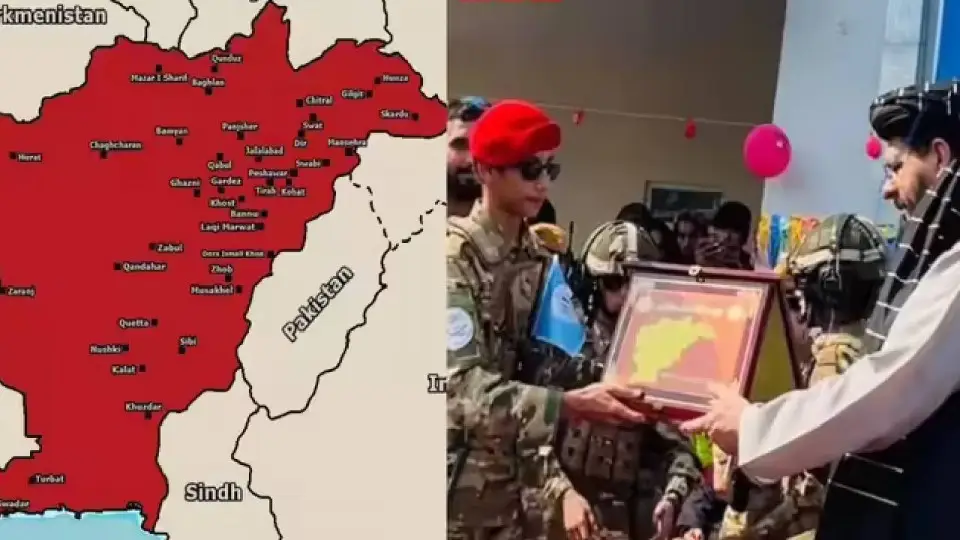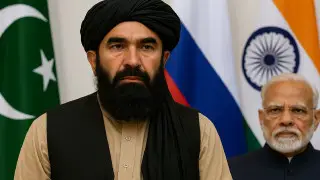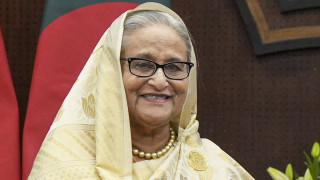
(Credit: OpenAI)
New Delhi: The historical dispute over the Durand Line has flared up once more. Afghanistan has never recognized the line drawn by the British, claiming that large parts of present-day Pakistan’s northwest belong to Afghan territory. Recent statements from Taliban leaders suggest that the issue is not symbolic anymore.
The Afghan interim government now openly speaks of reclaiming what it calls “lost land.” Pakistan, already facing internal crises, sees this as a major threat. The atmosphere at the border has turned tense, with troop movements and stronger statements on both sides. The crisis is no longer diplomatic but increasingly military in tone. The region is moving into an unpredictable phase where any misstep could spark conflict.
Diplomatic efforts to calm the situation fell apart during discussions in Turkey. Pakistan reportedly wanted Afghanistan to take full responsibility for preventing cross-border militant attacks. However, the Taliban government refused to accept one-sided responsibility. They insisted that Afghanistan will not allow its soil to be used against any nation but also said Pakistan must take accountability for its own internal security. The disagreement widened during the talks, leading to a breakdown without any common ground. Both sides left the negotiations with firmer positions than before. Observers now believe dialogue may not resume soon unless international pressure increases. The diplomatic channel has weakened at a critical time.
At a public gathering in Khost, Taliban Deputy Interior Minister Mohammad Nabi Omari delivered a forceful message. He said Afghanistan is prepared to defend itself the same way it resisted global powers like the Soviet Union and the United States. His speech suggested that regaining territory beyond the Durand Line is now part of national strategy. The remarks were not casual but carefully framed to send a signal. Social media and regional media amplified his words widely. Pakistan interpreted the statement as a direct strategic threat. The speech has accelerated security concerns along the border.
In the same event, a symbolic map of “Greater Afghanistan” was presented. The map removed the Durand Line and included regions such as Khyber Pakhtunkhwa, parts of Balochistan, and Gilgit-Baltistan within Afghan borders. This concept has existed for decades, especially among nationalist Pashtun groups. However, its open display by Afghan officials represents a major policy shift. Pakistan sees this as a challenge to its territorial integrity. Regional analysts say the map is not merely historical nostalgia but a strategic narrative tool. It indicates Afghanistan’s willingness to reshape political geography if conditions allow.
Pakistan is currently dealing with overlapping political, economic, and security crises. Militant attacks linked to TTP have destabilized internal regions. The government and armed forces are stretched thin. The Taliban denies supporting TTP, but Pakistan remains unconvinced. If border tensions escalate into direct confrontation, Pakistan may find it difficult to sustain prolonged conflict. The timing of the Taliban’s statements appears to exploit Pakistan’s internal weaknesses. This has raised fears among Pakistani authorities that the threat may not be rhetorical. The regional power equation is shifting unpredictably.
The issue is not just about borders; it ties into ethnic identity. Pashtuns live on both sides of the Durand Line, and many believe the border split their homeland. This feeling of shared heritage strengthens the Taliban’s narrative. Pakistan has struggled to address ethnic demands in its northwest region. Afghanistan is now leveraging this historical sentiment to build internal unity. If the Pashtun identity movement gains momentum, it could challenge Pakistan’s administrative structure. The identity factor makes the dispute deeply emotional and harder to resolve diplomatically.
Experts warn the region is entering a delicate phase. Any military action, even small, may escalate quickly. Pakistan may seek international mediation, while Afghanistan signals it is ready for confrontation. The global community is watching closely because the conflict could affect South Asia’s stability. If the dispute expands, it may also influence alliances and border dynamics in the wider region. For now, both sides are maintaining a rigid stance. The coming weeks will determine whether the situation stabilizes or moves toward a dangerous escalation.













Copyright © 2025 Top Indian News
